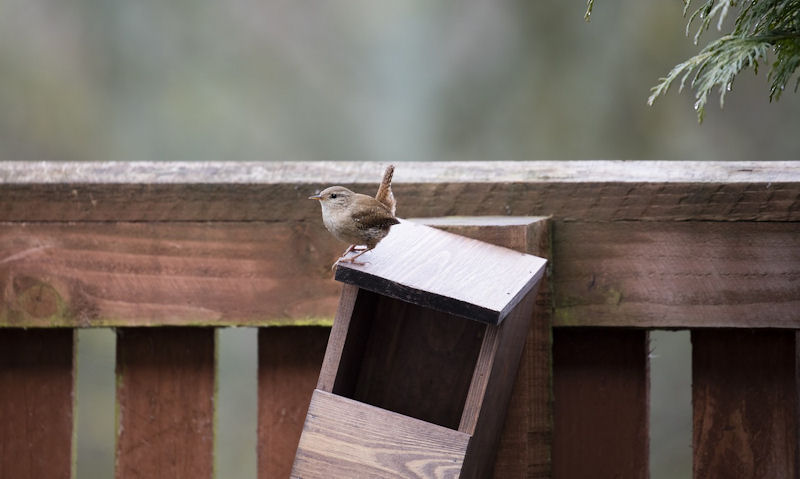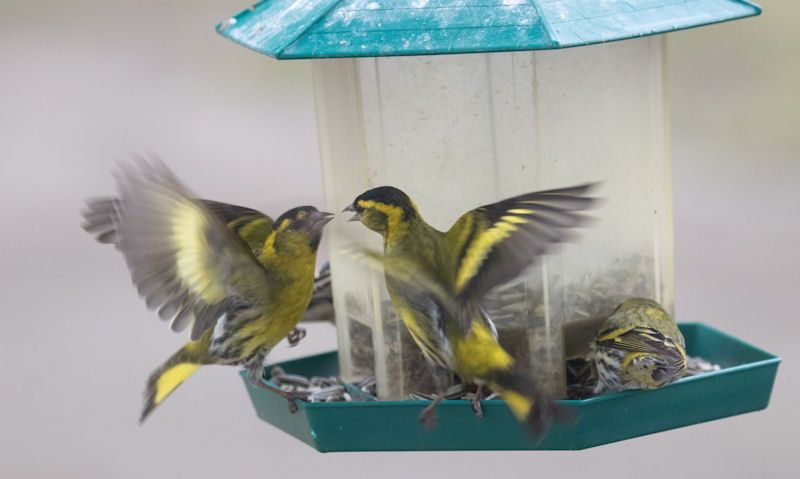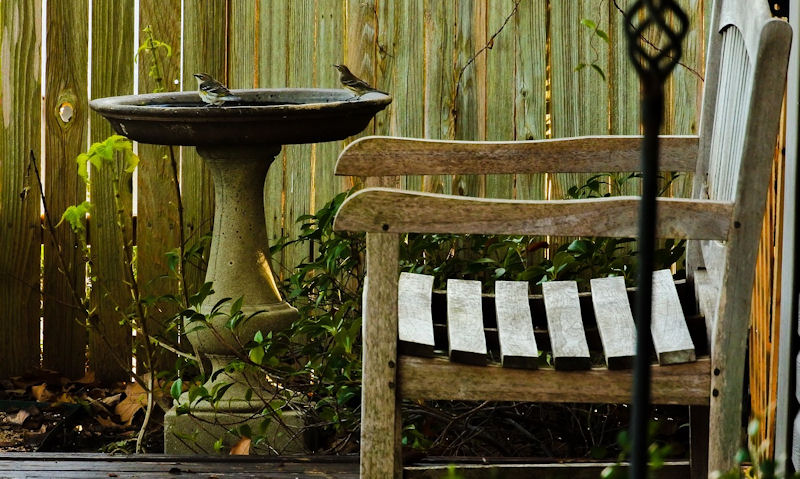Do Wrens use nest boxes
Its not easy to make out a Wren as their size and agility makes them hard to spot, but the small garden bird does indeed nest in bird boxes.
Wrens are big users of nest boxes so may be willing to take up residence in a brand new bird box of your own. Make it a very specific wooden nest box that is smaller than a Robin box, but uses an open-fronted style. Use a 140mm by 140mm square entrance hole - or a larger than normal 45mm rounded hole size.
If you are lucky enough to have a garden situated near a quiet, wooded or park area, you could attract Wrens to nest in your nest box.
Your garden must remain quiet with no activity or disturbance at all, whereas to site the nest box deep into natural coverage, such as an hedgerow or ivy - is essential to seeing Wrens nest successfully.
Here though lies the problem, any bird box that is developed for use by a Wren tends to be used for Robins - so it is possible to see Robins arrive at the box.
What is a Wren bird house actually is a box design that inherits one that belongs to a Robin, or vice-versa. While Wrens would prefer a smaller box, Robins use a slightly larger box that adopts to their size.
To buy a nest box it would need a large open front that Wrens and Robins prefer, but can be in a square, rectangular shape - or made with a round hole.
Wrens DO nest in bird boxes
Despite not being seen very often in our gardens due to how agile and quick they are to spot, the Wren does indeed nest in wooden bird boxes.
Ground feeding birds too so its not possible for Wrens to feed off our bird feeders.
But to nest in a bird box it must be located in a very specific location, and I am not just talking about where to place a Wren bird box in the garden.
Gardens must be located near a wooded area with the possibly of an open park or field, where they can source for food in peace and quiet.
Likewise, the Wren nest box must be setup in a way that doesn't risk you, the family or the pets disturbing them.
Noisy, busy gardens are unlikely see a Wren succeed in nesting in a wooden bird box.
Box design is specific
Begin the long, delicate process of setting up a bird box for the intention of only attracting Wrens to nest - with a bird box designed for use be a Robin.
Shape of the wooden bird box can be a standard square or slightly rectangular, but to still maintain a small size nest box.
Too big bird boxes can only see Wrens avoid it, while a tighter, smaller box can be more appealing as its creates a safer environment to lay eggs.
Look to a robin bird box for inspiration but do try to go for something smaller.
Rather than the standard big robin bird boxes, there are such a thing as smaller boxes that use a corresponding, tinier entrance hole size.
Size of Wren bird box would ideally be quite shallow, so a deep box intended for a Starling for example, might not cut it. But you can buy a bird box for small garden birds that use a smaller rounded hole.
Nice big open front helps
Entrance hole for what is Britains most common bird is in fact quite a big one needed, be it an large open fronted style hole or a simple large rounded hole.
Wrens do use nest boxes providing the nest box hole size to enter and exit it quite big, as the Wren doesn't want to be too restricted inside a vulnerable box.
The large entrance, while not an exact replica to their real nests found in the wild - Wrens do nest in real nests that are open, thus exposed to the elements.
To use an open fronted nest box then make it in 140mm by 140mm, give or take a centimetre or two. But the nest box entrance hole can be changed as the smallest square shape is a safe one, but you can widen it if need be.
Wrens will use the ledge of the open front bird box, or use a nearby branch to perch outside their new bird box. To give you an idea how different a Wren nest box is, the box doesn't use a perch as associated with common wooden bird boxes.
Bird boxes for Wrens tend to be much easier to clean out and maintain as its accessible though the entrance - but to use a rounded hole - make it a nest box with an opening side panel or hinged roof.
Wrens only NOT guaranteed
Wrens are notorious thieves of Robin bird boxes, so would happily come along to take over the box.
That means then to site a bird box intended for a Wren can indeed attract a Wren to it, that is if a Robin is not already settled in for a long period.
While the Robins wingspan can grow up to 22cm, the Wrens can only go as far has 17cm, so its unusual to think such a small common garden bird can take up a bird box used by a larger bird... but still a small one I might add.
You'd notice then to buy a nest box suitable for a Wren would be those sold for Robins, but the problem with this is - the boxes are always going to be too large.
That might not matter much for Wrens as they don't nest in a wooden bird box in an exact size, but it can be the perfect new home for a Robin.
To make a bird box intended for Wrens to nest, then a smaller box would do, but it can then turn Robins away as they deem it to be too tight of a fit for them.
To summarise
Despite not seeing a Wren stay too long or not at all in our gardens, the Wren is indeed a wild bird that would take up residence in our garden nest box.
As they are in decline in Britain, its up to us to bring more Wrens into the world, so you can help by setting up a bird box.
WrenS do nest in a wooden bird box but it must be very specific to their needs.
Nest box in question can be one designed for any small common garden bird, but it must use a larger than normal rounded entrance hole.
However, a Wren bird box is more so like one that belongs to a Robin, so can have an open front that is up to 140mm tall and 140mm wide.
If using a bird box with a rounded hole, the hole size must be 45mm or larger.
Nice open front or rounded hole would then be a nest box catered to Wrens. But as the Wren can steel a Robin box; it is possible to see a Robin take up the offer of a new bird box first - before a Wren is given the chance.


